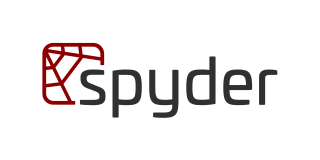
Vim is a free and open-source, screen-based text editor program. It is an improved clone of Bill Joy's vi. Vim's author, Bram Moolenaar, derived Vim from a port of the Stevie editor for Amiga and released a version to the public in 1991. Vim is designed for use both from a command-line interface and as a standalone application in a graphical user interface. Since its release for the Amiga, cross-platform development has made it available on many other systems. In 2018, it was voted the most popular editor amongst Linux Journal readers; in 2015 the Stack Overflow developer survey found it to be the third most popular text editor, and in 2019 the fifth most popular development environment.
In computer-based language recognition, ANTLR, or ANother Tool for Language Recognition, is a parser generator that uses a LL(*) algorithm for parsing. ANTLR is the successor to the Purdue Compiler Construction Tool Set (PCCTS), first developed in 1989, and is under active development. Its maintainer is Professor Terence Parr of the University of San Francisco.

DokuWiki is an open source wiki application licensed under GPLv2 and written in the PHP programming language. It works on plain text files and thus does not need a database. Its syntax is similar to the one used by MediaWiki. It is often recommended as a more lightweight, easier to customize alternative to MediaWiki. The 'Doku' in DokuWiki is short for Dokumentation which in German means documentation.
The landscape for instant messaging involves cross-platform instant messaging clients that can handle one or multiple protocols. Clients that use the same protocol can typically federate and talk to one another. The following table compares general and technical information for cross-platform instant messaging clients in active development, each of which have their own article that provide further information.
Textile is a lightweight markup language that uses a text formatting syntax to convert plain text into structured HTML markup. Textile is used for writing articles, forum posts, readme documentation, and any other type of written content published online.

Markdown is a lightweight markup language for creating formatted text using a plain-text editor. John Gruber and Aaron Swartz created Markdown in 2004 as a markup language that is intended to be easy to read in its source code form. Markdown is widely used for blogging and instant messaging, and also used elsewhere in online forums, collaborative software, documentation pages, and readme files.

CKEditor is a WYSIWYG rich text editor which enables writing content directly inside of web pages or online applications. Its core code is written in JavaScript and it is developed by CKSource. CKEditor is available under open source and commercial licenses.

An online rich-text editor is the interface for editing rich text within web browsers, which presents the user with a "what-you-see-is-what-you-get" (WYSIWYG) editing area. The aim is to reduce the effort for users trying to express their formatting directly as valid HTML markup.

TinyMCE is an online rich-text editor released as open-source software under the MIT License. It converts HTML textarea fields, or other designated HTML elements, into editor instances.
In FOSS development communities, a forge is a web-based collaborative software platform for both developing and sharing computer applications.

Fiji is an open source image processing package based on ImageJ2.
mojoPortal is an open source, cross-platform, content management system (CMS) for ASP.NET which is written in the C# programming language. mojoCMS supports plugins and has built-in support for, among others, forums, blogs, event calendars, photo galleries, and an e-commerce feature. The project was awarded an Open Source Content Management System Award by Packt in 2007 saying that the "ease of use, set of relevant tools and plugins and also the fact that it is cross platform, made it stand out above the rest". In February 2017, i7MEDIA, LLC, acquired the project from lead developer Joe Audette.

Sublime Text is a shareware text and source code editor available for Windows, macOS, and Linux. It natively supports many programming languages and markup languages. Users can customize it with themes and expand its functionality with plugins, typically community-built and maintained under free-software licenses. To facilitate plugins, Sublime Text features a Python API. The editor utilizes minimal interface and contains features for programmers including configurable syntax highlighting, code folding, search-and-replace supporting regular-expressions, terminal output window, and more. It is proprietary software, but a free evaluation version is available.

Spyder is an open-source cross-platform integrated development environment (IDE) for scientific programming in the Python language. Spyder integrates with a number of prominent packages in the scientific Python stack, including NumPy, SciPy, Matplotlib, pandas, IPython, SymPy and Cython, as well as other open-source software. It is released under the MIT license.

Friendica is a free and open-source software distributed social network. It forms one part of the Fediverse, an interconnected and decentralized network of independently operated servers.
ContentTools is an open-source WYSIWYG editor for HTML content written in JavaScript/CoffeeScript by Anthony Blackshaw of Getme Limited.

PostCSS is a software development tool that uses JavaScript-based plugins to automate routine CSS operations. It was designed by Andrey Sitnik with the idea taking its origin in his front-end work for Evil Martians.

Mastodon is free and open-source software for running self-hosted social networking services. It has microblogging features similar to Twitter, which are offered by a large number of independently run nodes, known as instances or servers, each with its own code of conduct, terms of service, privacy policy, privacy options, and content moderation policies.

The fediverse is a collection of social networking servers which can communicate with each other, while remaining independently controlled from each other. Users on different social networks and websites can send and receive status updates, multimedia and other files to and from others across the network.

Lemmy is a free and open-source software for running self-hosted social news aggregation and discussion forums. These hosts, known as "instances", communicate with each other using the ActivityPub protocol.













